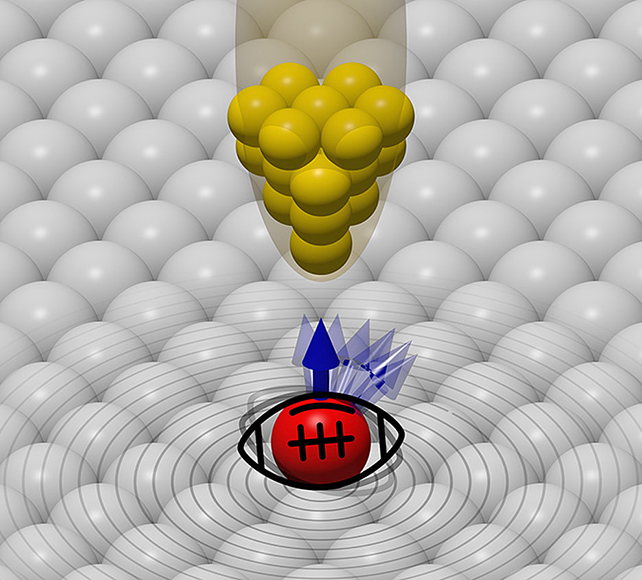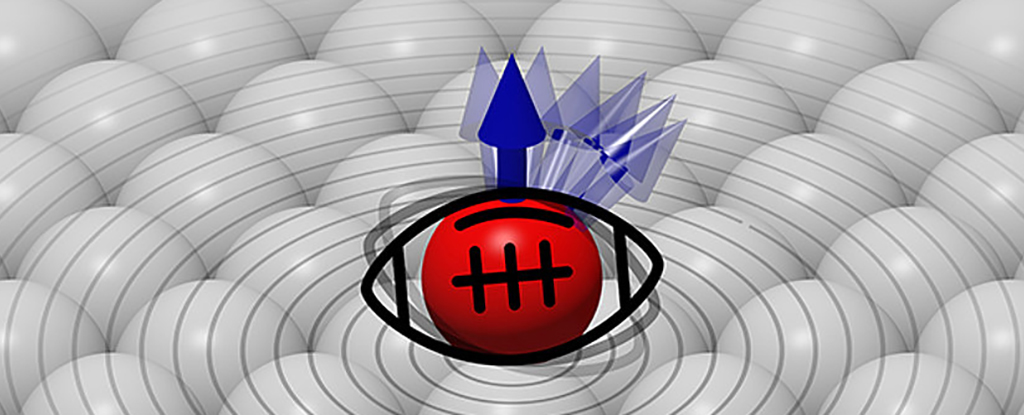Products You May Like
A super-small, highly precise, ultra-cold physics experiment has revealed a brand new quantum state, called the spinaron.
It occurs under extremely cold conditions when a cobalt atom on a copper surface is subjected to a strong magnetic field, causing its direction of spin to flip back and forth.
The discovery could trigger a major rethink of assumptions on how low-temperature conductive materials behave, according to physicists from the Julius Maximilian University of Würzburg (JMU) and the Jülich Research Centre in Germany.
The researchers were able to see the magnetic spin of the cobalt atom in the experimental setup thanks to the combination of the intense magnetic field and an iron tip added to their atomic-scale scanning tunneling microscope.

This spin wasn’t rigid, but rather continually switching back and forth, which then excited the electrons of the copper surface. To use an analogy – very helpful in high-level physics, the cobalt atom is like a spinning rugby ball.
“When a rugby ball spins continuously in a ball pit, the surrounding balls are displaced in a wave-like manner,” says experimental physicist Matthias Bode from JMU.
“That’s precisely what we observed – the copper electrons started oscillating in response and bonded with the cobalt atom.”
The new observations had previously been predicted, and challenge existing thinking on something called the Kondo effect: a curious lower limit to electrical resistance when magnetic impurities are present in cold materials.
In these new experiments, the cobalt atom stays in constant motion, maintaining its magnetism even while interacting with the electrons. Under the rules of the Kondo effect, however, the magnetic moment would be neutralized by the electron interactions.
Since the 1960s, scientists have used the Kondo effect to explain certain types of quantum activity when metals such as cobalt and copper are combined. Now, some of that long-standing thinking might have to be changed – and the researchers are looking for other scenarios where spinarons could apply instead of the Kondo effect.
“We suspect that many might actually be describing the spinaron effect,” says experimental physicist Artem Odobesko from JMU, adding: “If so, we’ll rewrite the history of theoretical quantum physics.”
Quantum physics can be difficult to get your head around, but every breakthrough like this leads scientists to a greater understanding of how materials and the forces on them work together at the atomic level.
And the researchers themselves acknowledge the tension between making such an important discovery in highly precise and extreme lab conditions – and yet not really having any immediate practical use for it.
“Our discovery is important for understanding the physics of magnetic moments on metal surfaces,” says Bode. “While the correlation effect is a watershed moment in fundamental research for understanding the behavior of matter, I can’t build an actual switch from it.”
The research has been published in Nature Physics.
